Flaky Gluten Free Pie Crust Recipe
This easy gluten-free pie crust tastes just as delicious as the white-flour crusts of my childhood! It's ultra flaky with a classically rich, buttery flavor. Best of all, with just a few simple techniques, making perfect pie crust is way easier than you might think. I’ve included a step-by-step video on how to do it below - never fear pie crust again! (If you do eat gluten you can use this same recipe and technique using regular all-purpose flour.)
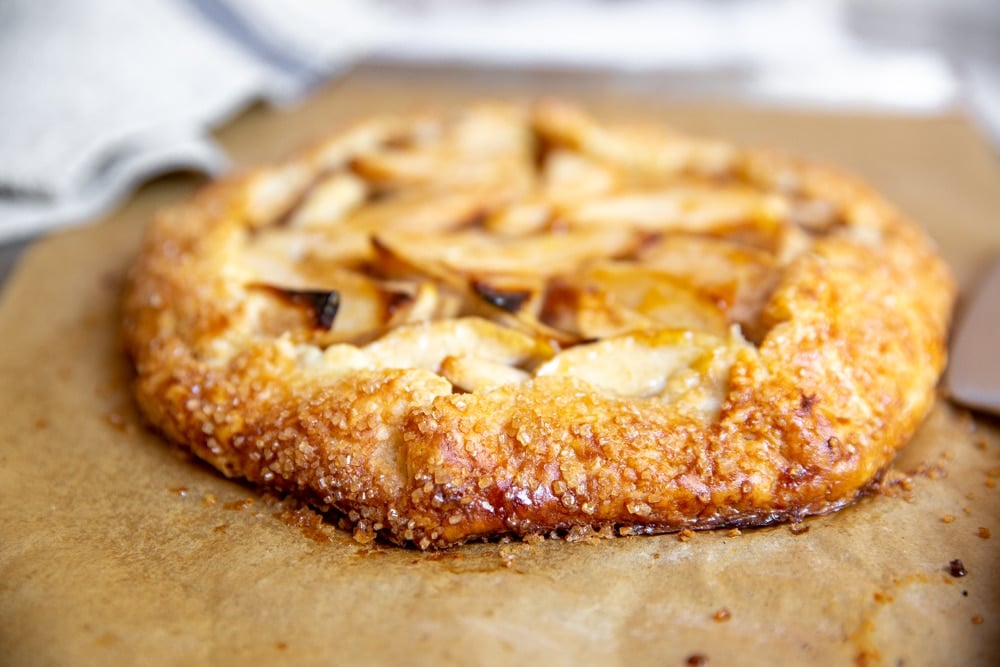
Best gluten free flour for pie crust
After testing dozens of gluten free flour brands, I found Cup 4 Cup flour to have the best flavor and texture by far in pie crust (this is not a paid endorsement or sponsored post!). It was also much easier to work with than other gluten free flours, which tended to be crumbly and hard to roll. If you'd rather make a gluten free flour blend from scratch, sign up for my class, Mastering Gluten Free Pie Making, where you'll learn my homemade gluten-free flour for pie dough!
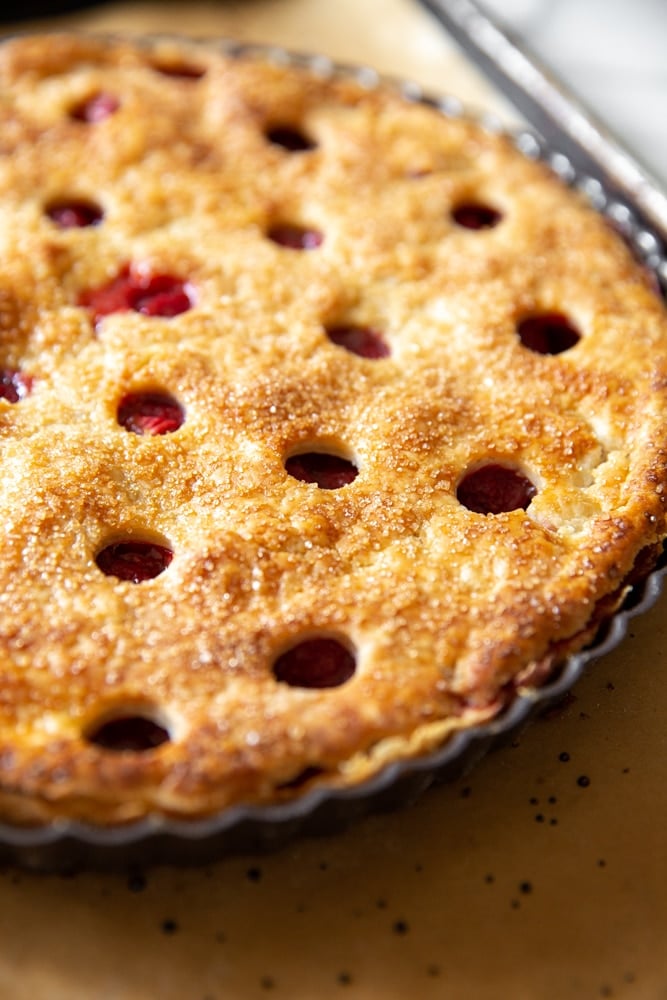
Gluten free pie crust ingredients (simple and easy)
- Cup 4 Cup gluten free flour (if you're not GF you can use regular all-purpose flour)
- Fine sea salt
- Sugar (a touch of sugar gives the crust a delicious flavor and helps it brown, but it can be omitted)
- Butter (preferably a European style butter, see below)
- Apple cider vinegar (a splash of apple cider vinegar helps ensure a flaky texture)
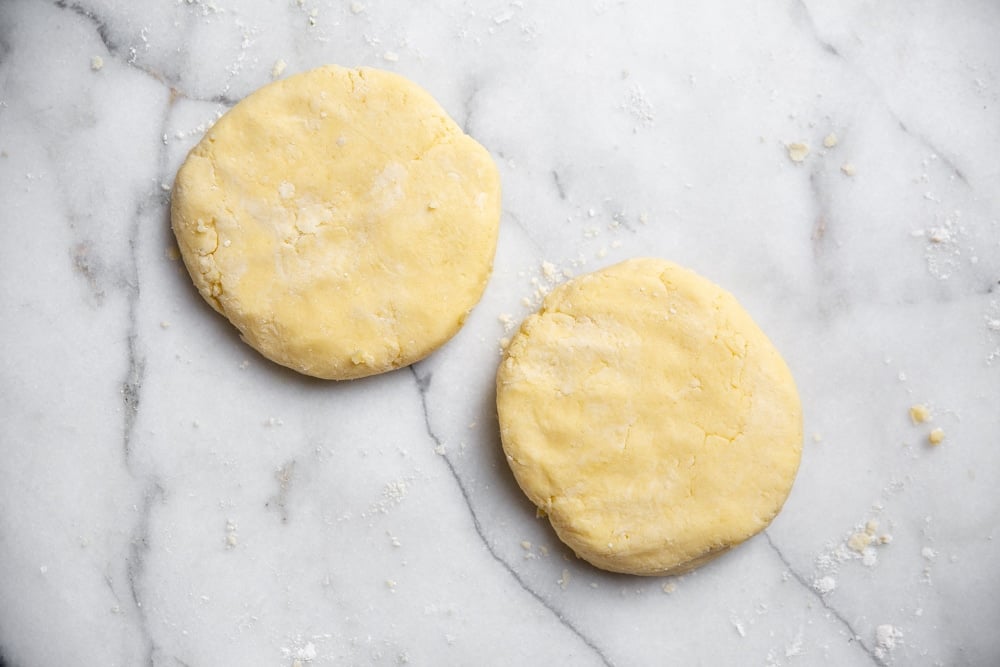
How to make gluten free pie crust
- First, use good-quality, European style butter (such as Kerrygold or Plugra), which has a higher fat content and will make rolling and working the dough much easier (not to mention that it will taste better). Cut the butter into about ½-inch sized pieces and put it in the fridge. Cold butter is key.
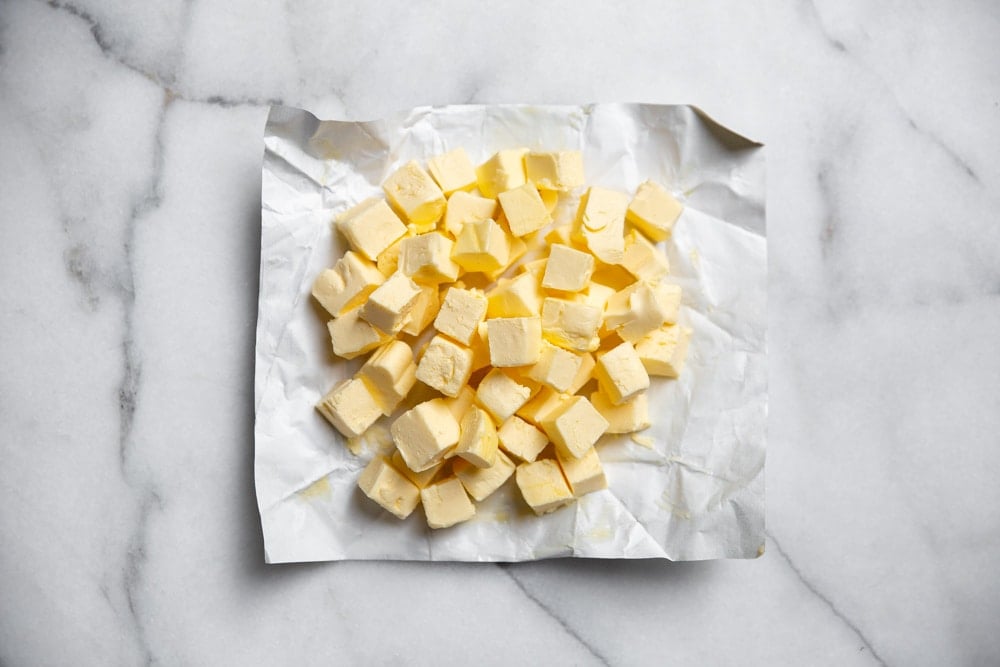
- In a food processor, add the flour (Cup 4 Cup or all-purpose), salt and sugar. Pulse to combine. You can also make pie dough using your hands or a pastry cutter (although a food processor is faster) - whisk the dry ingredients to combine.
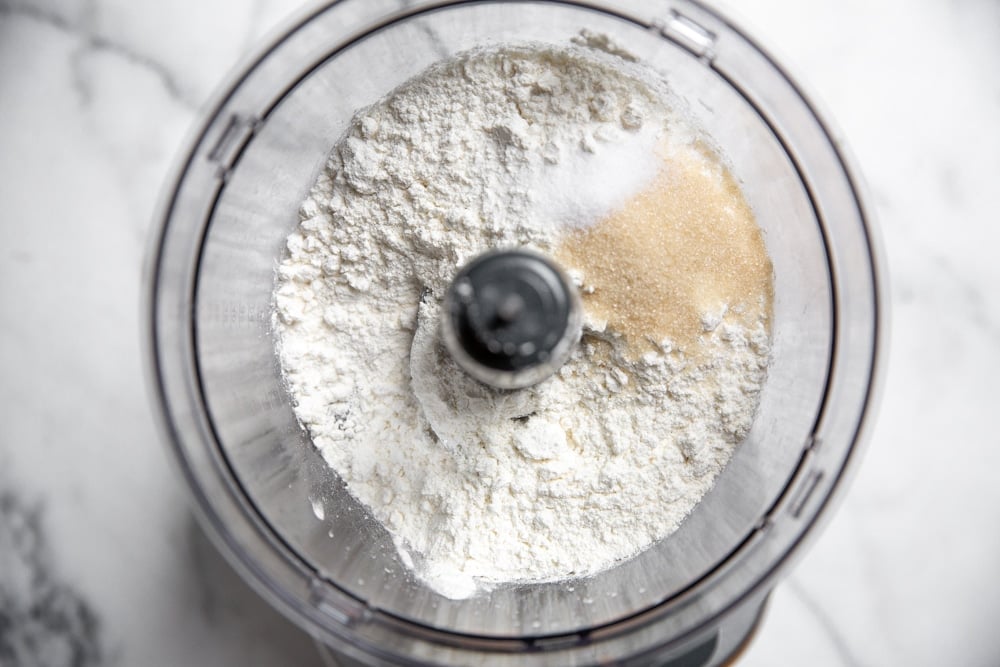
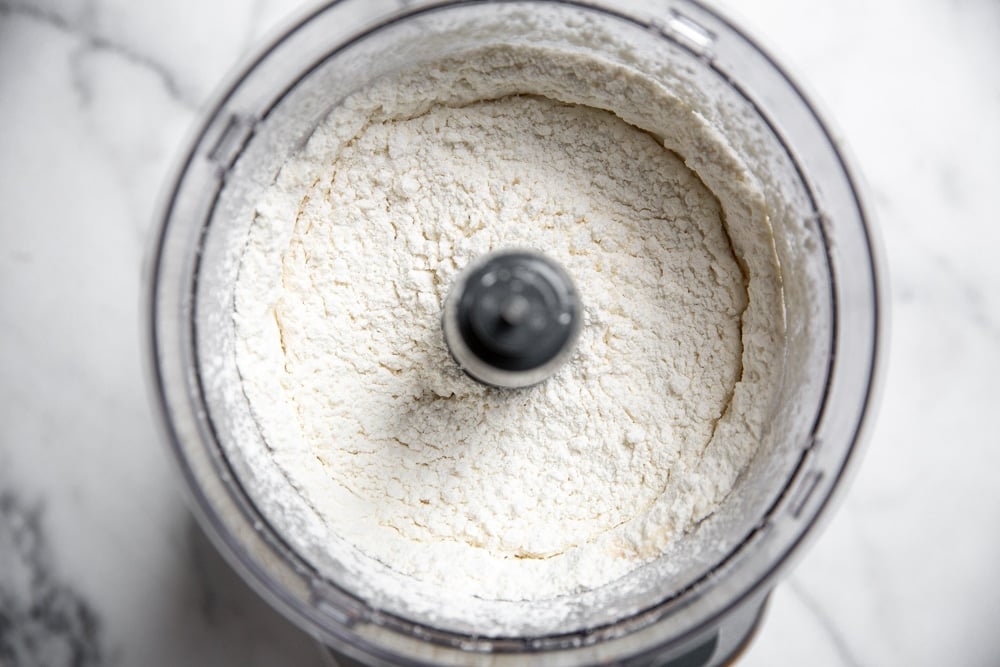
- Sprinkle the cold butter cubes over the flour and pulse just until the mixture is somewhat crumbly and there are still pea-sized (or slightly larger) chunks of butter (or use a pastry cutter to work the butter into the flour). Don’t over-mix the flour and butter, because those chunks equal a flaky crust.
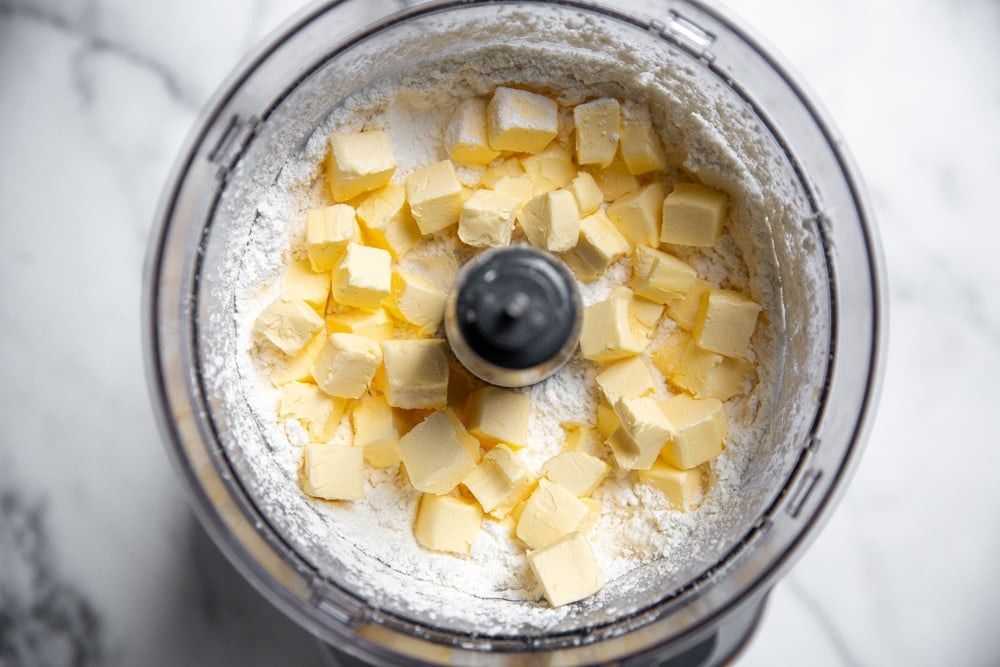

- Next, drizzle a bit of apple cider vinegar over top (this helps with flakiness). Put the lid back on, start the machine, and immediately start to drizzle in cold water. You want to add just enough water so that the dough sticks together when pinched—it should still look shaggy and a bit floury.
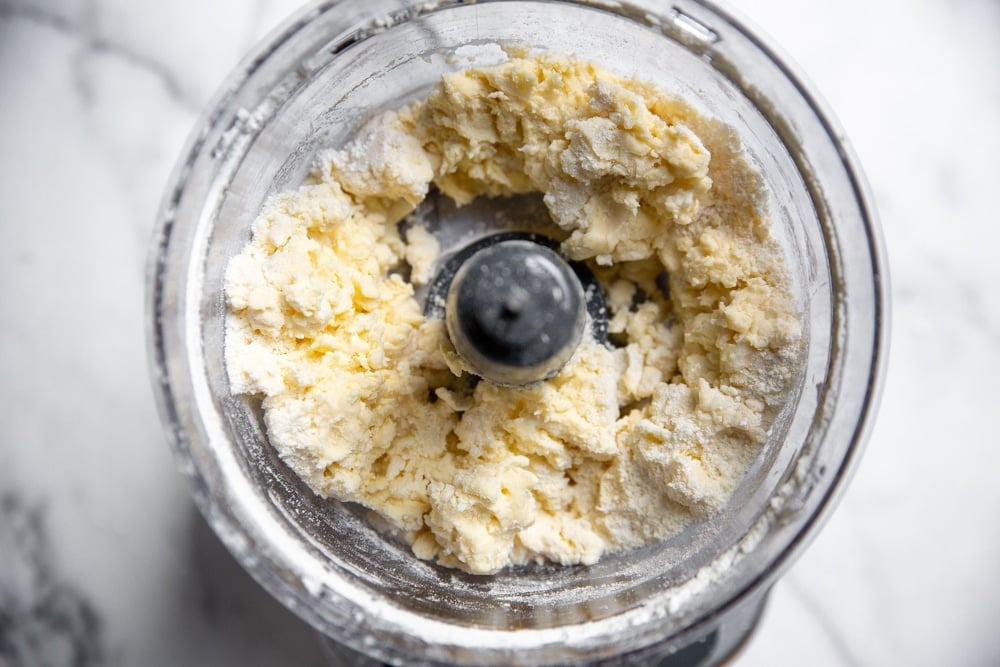
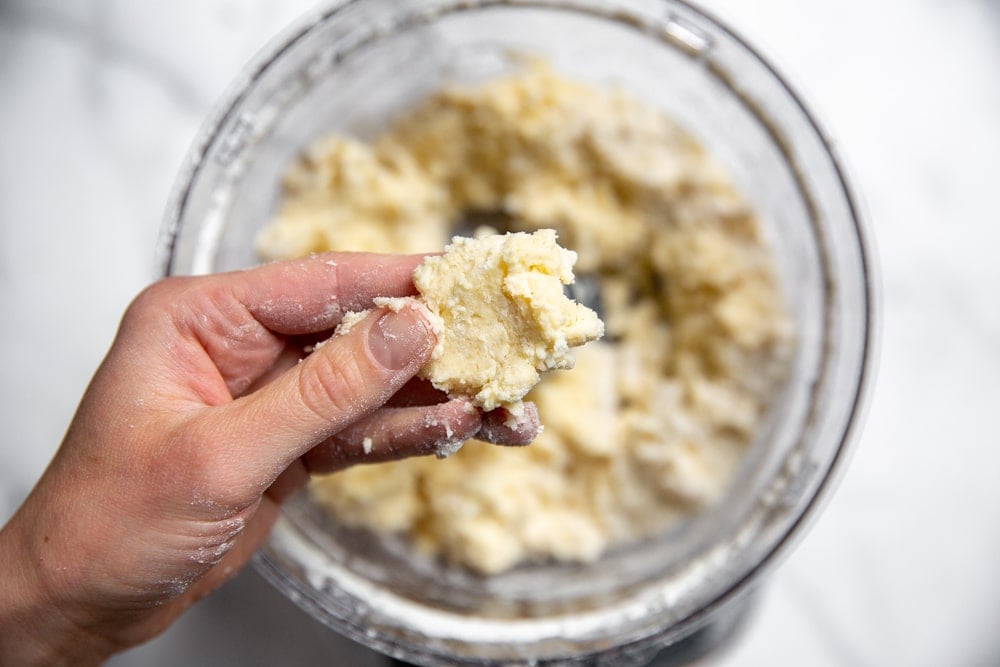
- Finally, transfer the dough to a lightly floured work surface, and use your hands to form it into a ball. Divide the dough ball in half, then press the dough into two disks. Cover the disks with plastic wrap, and refrigerate them for at least 30 minutes.
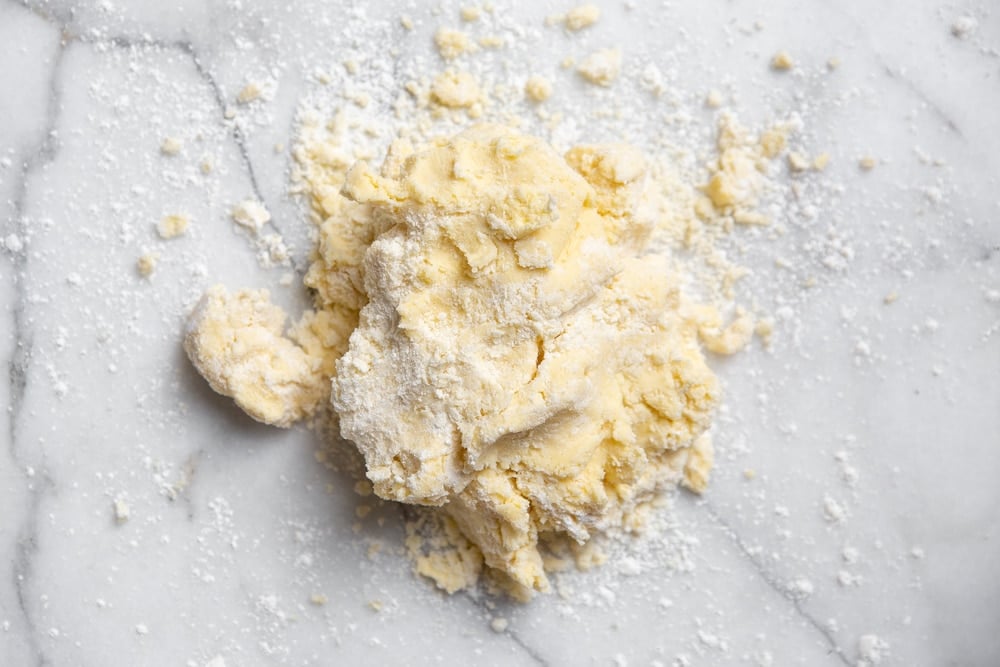
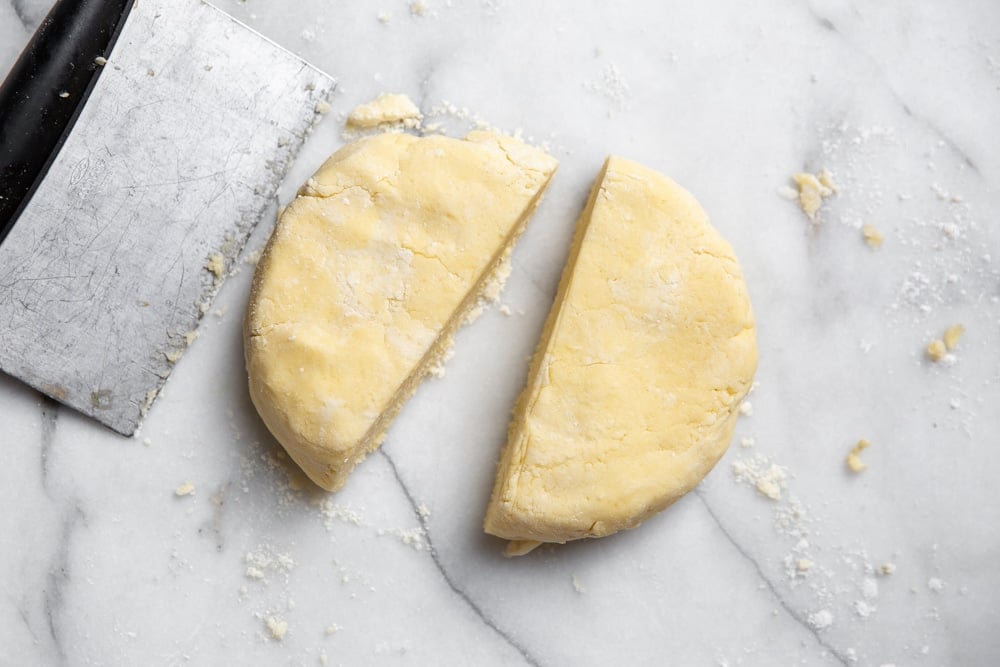
Can you make the dough ahead?
Yes! The dough can be refrigerated for up to 2 days or frozen for up to 3 months. Meaning you can go ahead and whip up the pie crusts for your holiday pies months in advance! (And if you're like me, nothing will bring you more joy than discovering a ready-made disk of pie dough in the freezer.)
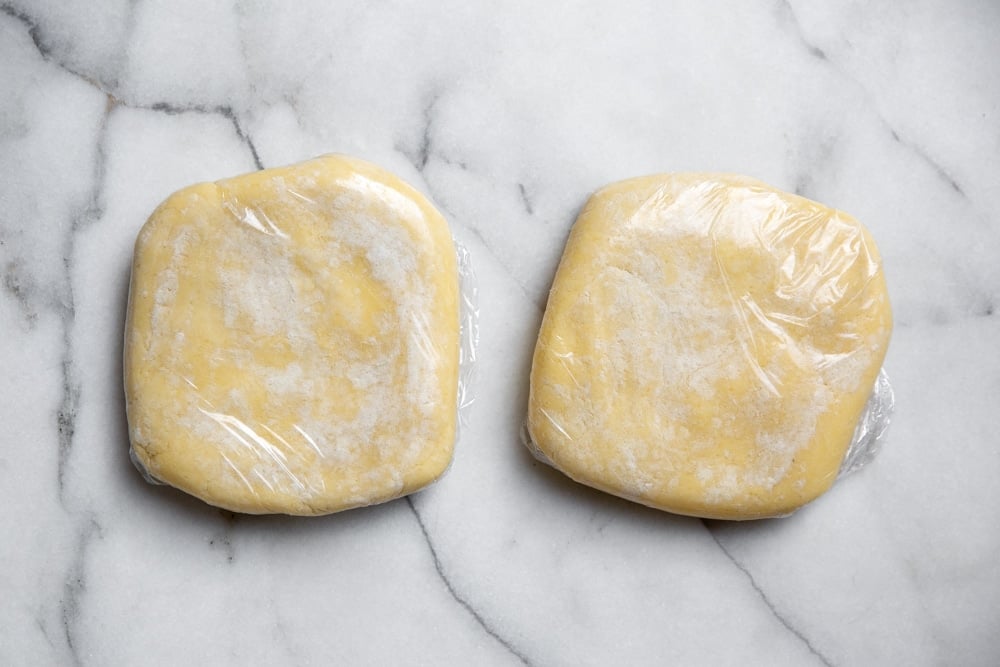
How can you use gluten free pie dough?
You can use this dough in any pie, tart or galette recipe (sweet or savory!). The dough makes enough for one 9-inch double crust pie, or 2 single crust pies (or 2 galettes). Whether it's your favorite berry pie or a savory egg quiche, this crust won't let you down. Don't miss my strawberry galette recipe, rhubarb galette with almond frangipane filling, apple galette, blueberry hand pies, savory spinach galette and chicken pot pie!
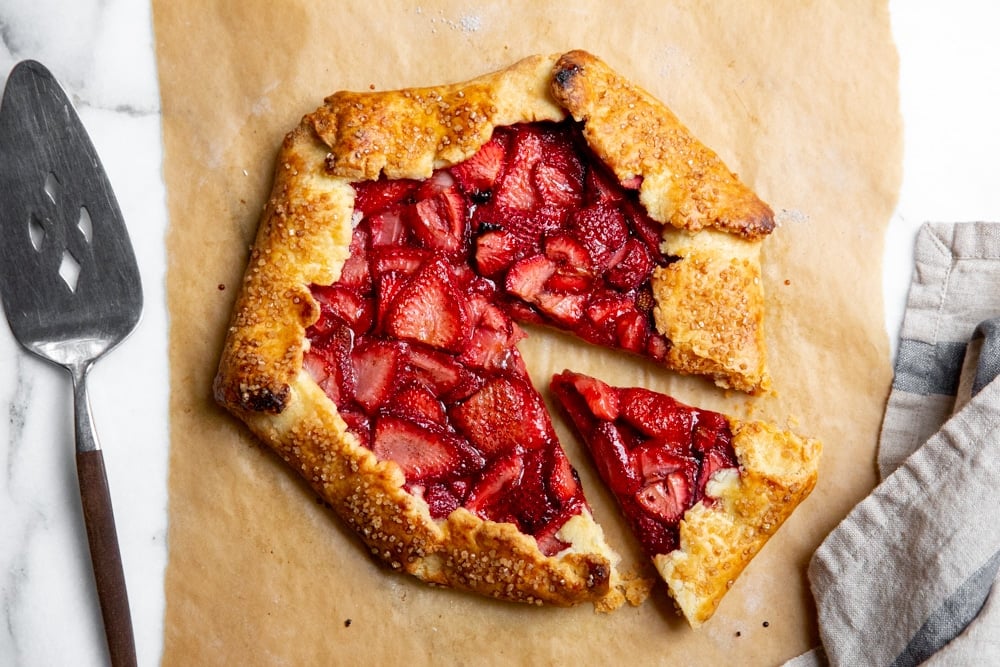
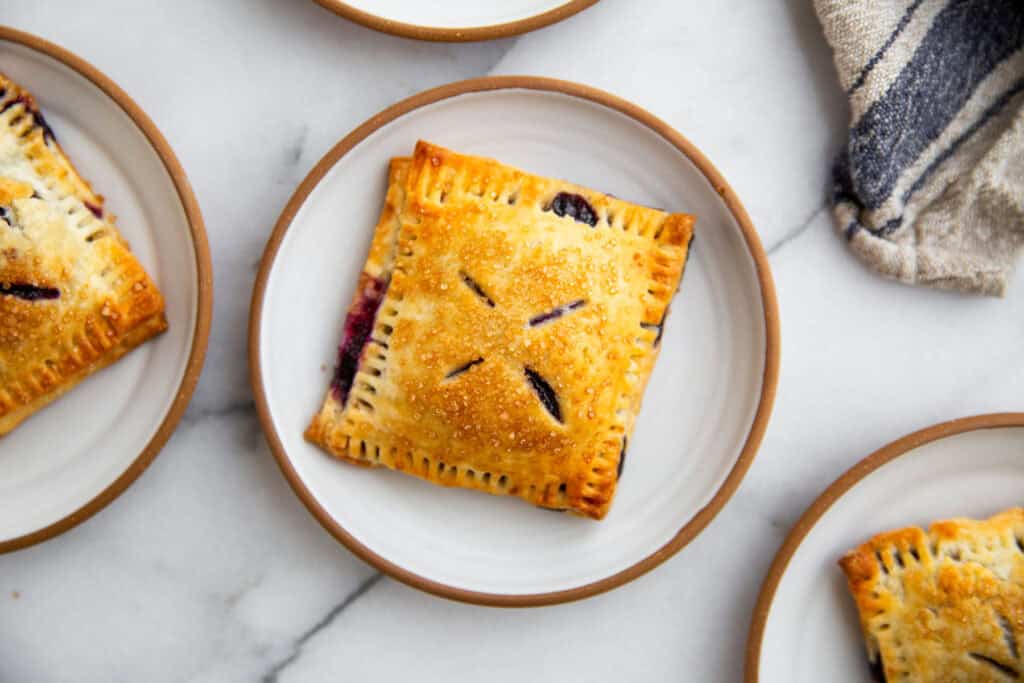
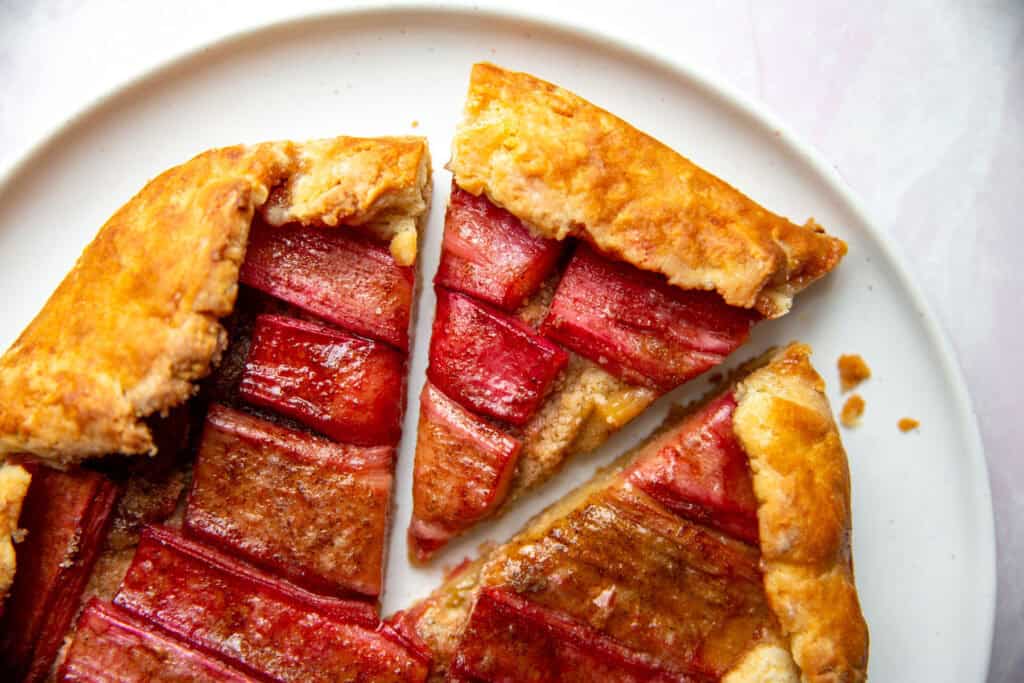
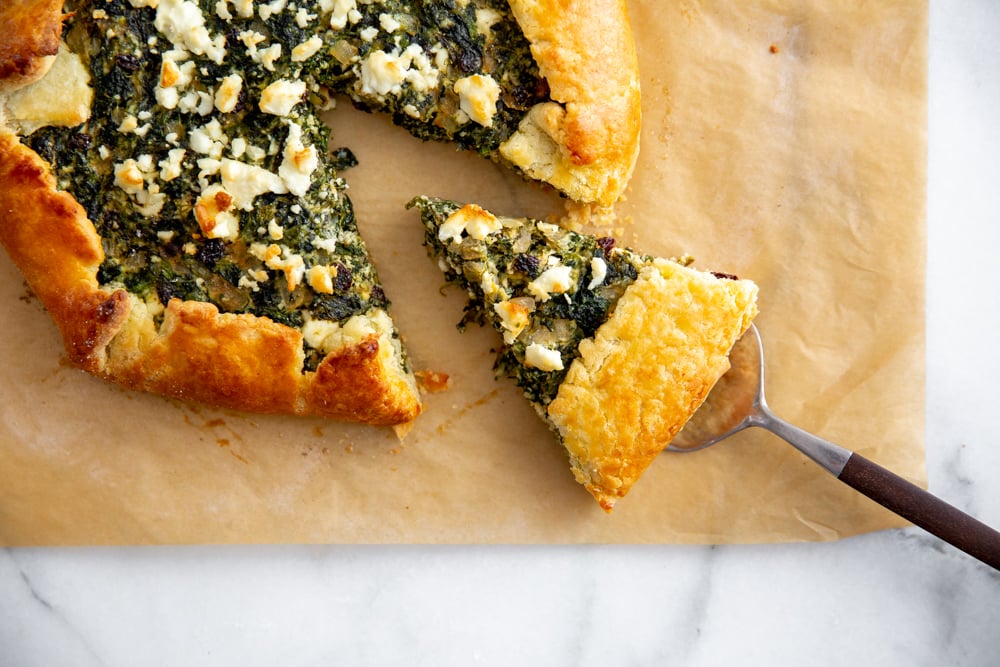
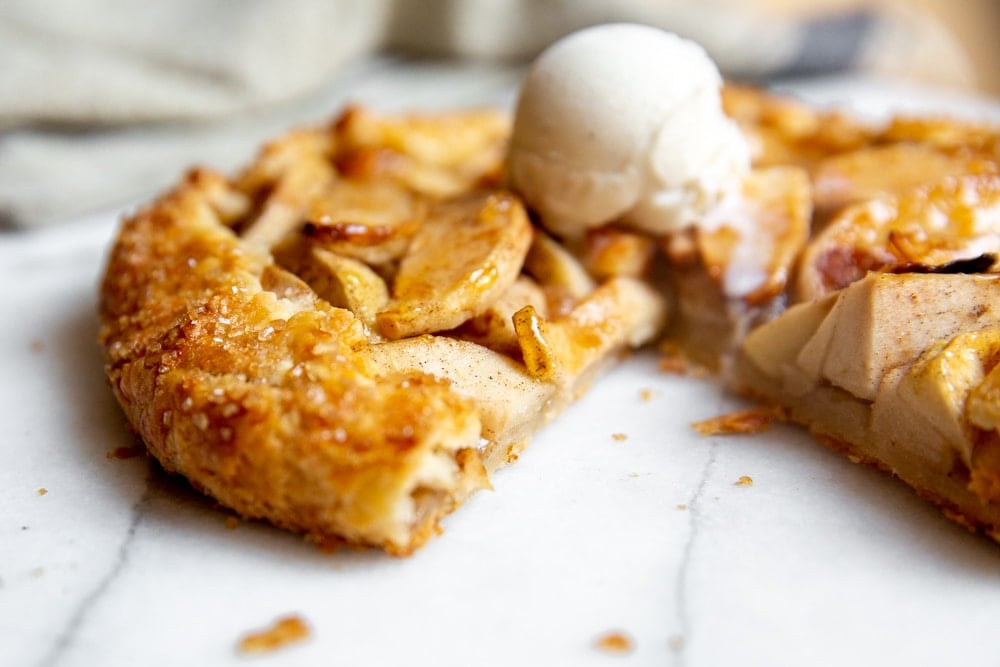
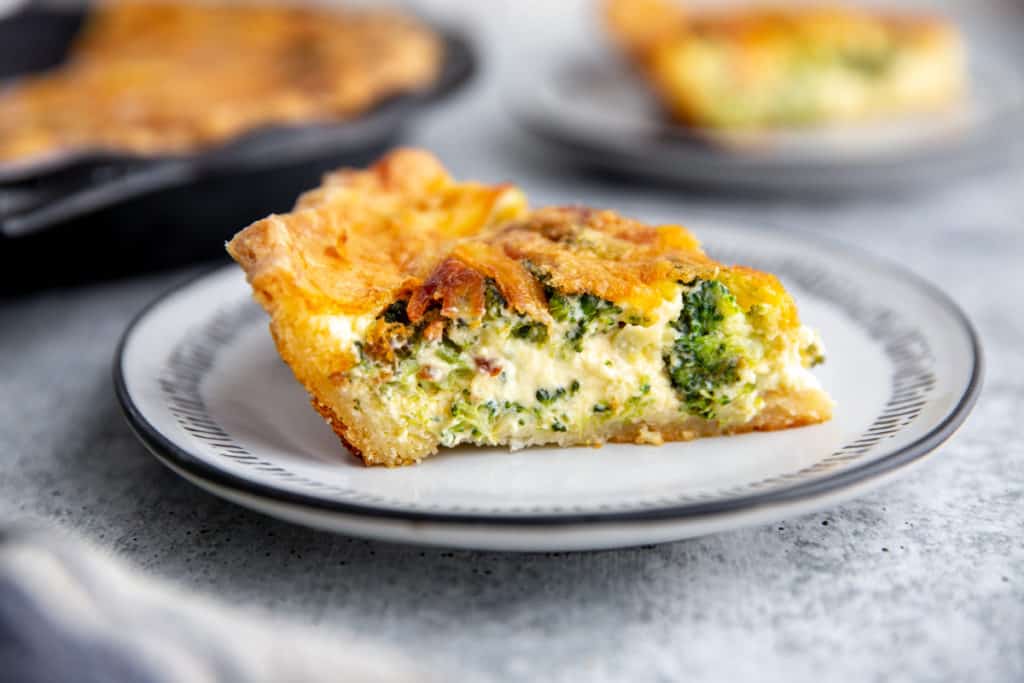
Tips for making gluten free pie crusts:
- Roll the dough out on a lightly floured piece of parchment paper to prevent sticking.
- For a beautifully browned crust, brush the dough with egg wash before baking (I also love sprinkling it with turbinado or demerara sugar for added sweetness and crunch).
- Using a glass pie plate allows you to see the bottom of the crust, ensuring that it is nicely browned before removing the pie from the oven.
- If the top of the pie gets too dark before the filling is fulling cooked, tent it with aluminum foil.
- If you don't have a food processor you can make this dough by hand. Whisk the dry ingredients in a large bowl, then add the cold butter cubes. Using your fingers (or a pastry cutter), rub the butter into the flour mixture, toss and smashing it until it's incorporated but you still see larger pea sized chunks. Drizzle in the apple cider vinegar and cold water, then toss with a fork until the dough comes together. From there you can turn it out onto a floured piece of parchment paper as indicated in the recipe.
- For more pie tips, check out this Gluten Free Pie Recipes post!
*This post contains Amazon and other affiliate links to products I use and love (from which I earn income, at no cost to you). Thank you for supporting From Scratch Fast!
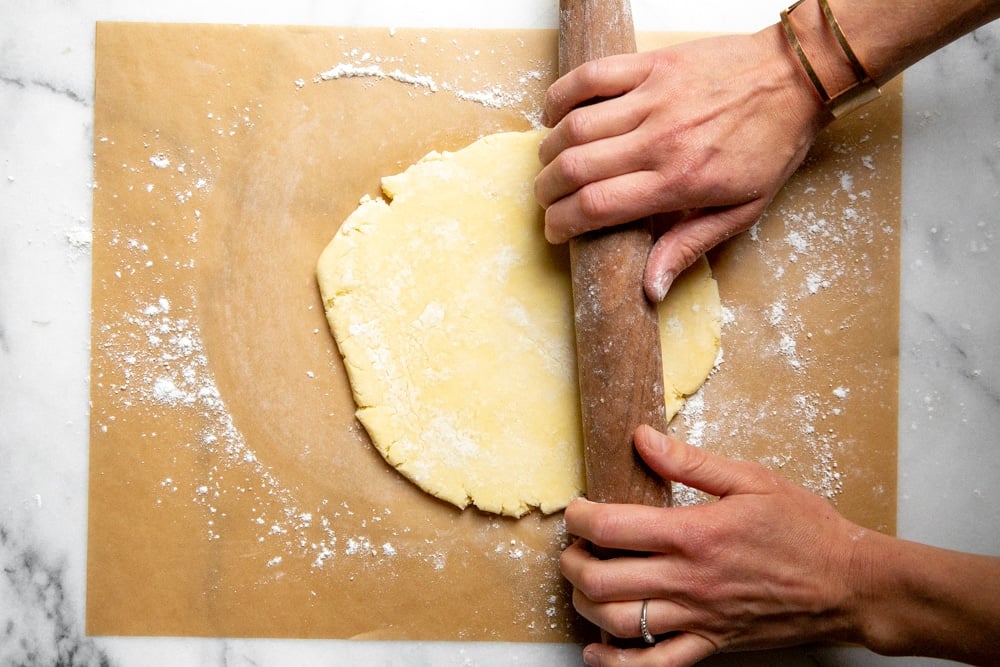
I've included more tips in the recipe below for rolling out the dough and for making both single- and double-crust pies. Here's to a season (no, let's make that a YEAR) of fearless, delicious pie baking!
FAQs
Yes! You can make the dough several months in advance! Wrap the dough in plastic wrap, then freeze it in a zip-top freezer bag (defrost the dough overnight in the refrigerator before using). Alternatively, refrigerate the dough (tightly wrapped) for up to 2 days.
This gluten free pie crust is virtually indistinguishable from regular pie crust! It is ultra flaky, with a rich, buttery flavor.
This recipe calls for Cup 4 Cup gluten free flour. After testing several different store-bought all-purpose flour blends, Cup 4 Cup had the best flavor and texture and was far easier to work with than other flours.
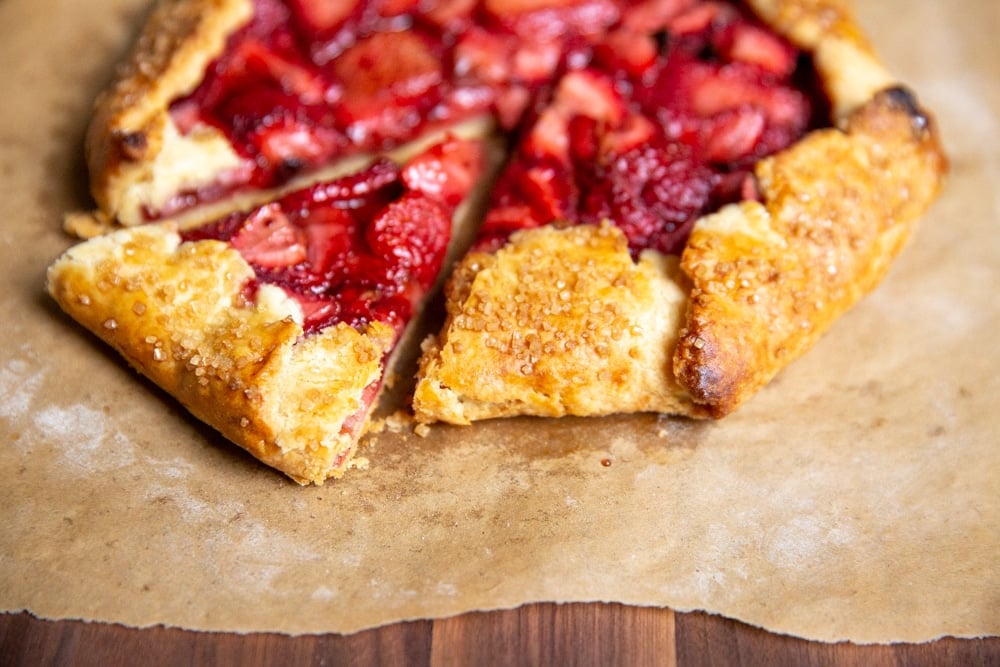
Use this gluten free pie crust in these recipes:
- Easy Strawberry Galette
- Cinnamon Vanilla Apple Galette
- Blueberry Hand Pies
- Broccoli Cheddar Quiche
- Savory Spanakopita Spinach Galette
- Chicken (or Turkey!) Pot Pie
Other easy gluten free desserts to try:
- Gluten Free Carrot Cake (Naturally Sweetened)
- No-Bake Mascarpone Cheesecake
- Healthy Almond and Coconut Cake
- DIY Ice Cream Cake
- Homemade Gluten Free Strawberry Shortcakes
- Individual Chocolate Flourless Cakes
Watch the video!
Stay connected
I'd love to answer any of your questions and see what you're cooking!! Don't forget to give this recipe a star rating and leave a comment below. Follow along on Instagram, Facebook, YouTube & Pinterest, and be sure to tag @nickisizemore so that I can share your creations!
Get the recipe!
Easy Gluten Free Pie Crust (the best crust ever!)
Ingredients
- 2 ½ cups (326g / 11.5oz) Cup4Cup brand gluten-free flour OR 2 ½ cups (319g / 11.25oz) all-purpose flour, plus more for workspace
- ½ teaspoon fine sea salt
- 1 tablespoon sugar (optional; this can be omitted for savory crusts)
- 2 sticks (8 ounces) unsalted, good quality butter (preferably a cultured or European style butter), cut into ½-inch dice
- 1 teaspoon apple cider vinegar
- ⅓ - ½ cup cold water
Instructions
- Put the flour, sea salt and sugar, if using, in a food processor and pulse to combine.
- Sprinkle the cold butter over the flour in the food processor. Pulse until the mixture looks crumbly with larger, pea-sized chunks of butter (those chunks of butter equal a flaky crust!). Drizzle the apple cider vinegar over top.
- Turn the machine on and immediately start drizzling cold water through the feed tube. Stop the machine once the mixture starts to come together and looks shaggy. Give the dough a pinch—if it sticks together, it’s ready to go. If not, turn the machine on again and drizzle in a bit more water. You might not need all of the water—you’re looking for a shaggy dough, not a cohesive ball.
- Transfer the dough to a lightly floured surface and shape it into a ball. Divide the dough into 2 equal pieces and form each into a flat disk. Wrap the disks in plastic wrap and refrigerate them for at least 30 minutes or for up to 2 days. Do Ahead: The wrapped disks can be placed in zip-top freezer bags and frozen for up to 3 months. Thaw in the refrigerator overnight before using.
- If the dough has been in the fridge for several hours, let it sit at room temperature until slightly softened, about 10-20 minutes. Roll it out on a lightly floured piece of parchment paper. If the dough immediately starts to crack once you start rolling, it’s too cold—give it a few more minutes to warm up. If the edges crack as you roll (which they probably will, so no fear!) simply patch them as needed.
Single Crust Pie
- To blind bake a single pie crust: Preheat the oven to 400˚F. Transfer the dough to a 9-inch pie plate, making sure to get in the corners. Using kitchen scissors, trim the dough to a ½-inch overhang. Fold the overhang under to form a ring around the pie plate. Crimp the ring, if you’d like. At this point, if the dough feels like it’s getting soft, pop the pie plate in the fridge or freezer for a few minutes to firm up. Prick the bottom all over with a fork. Line the crust with a large piece of parchment paper then pour in dried beans or pie weights to completely cover the bottom. Bake 15 minutes. Remove the parchment and beans. Bake 5 minutes longer, or until light golden on the bottom. Do Ahead: The crust can be blind baked up to 1 day in advance.
Double Crust Pie
- To make a double-crust pie: Preheat the oven to 400˚F. Roll out one disk of dough, and transfer it to a 9-inch pie plate, making sure to get in the corners. Add your fruit filling, and dot with butter. Roll out the second piece of dough and lay it over top. Using kitchen scissors, trim the dough to a ½-inch overhang. Roll the overhang under (pinching the top and bottom dough together) to form a ring around the pie plate. Crimp the ring, if you’d like. At this point, if the dough feels like it’s getting soft, pop the pie in the fridge or freezer for a few minutes to firm up. Brush the top dough with egg wash and sprinkle with sugar. Using a small knife, cut a few vents on top. Bake 35 minutes. Reduce the oven temperature to 350˚F and bake 15-30 minutes longer, or until the fruit is tender and bubbling. If needed, lightly tent the top crust or edges if they start to look too brown near the end of cooking.
Notes
- I use Cup 4 Cup Gluten Free Flour for this pie crust, which rolls out easily and tastes like a traditional pie crust. You can also use Bob's Red Mill 1-to-1 Gluten-Free Baking Flour, but the dough will be much crumblier and can be hard to transfer (it works best as a galette). If you're not gluten-free, you can use any regular all-purpose flour.
- Use a good quality European-style butter, such as Kerrygold, Plugra or Organic Valley.
- Don't over-process the butter and flour mixture. The small chunks of butter will give you a flakier crust!
- The finished dough will still look shaggy and a bit floury in the food processor. Don't over-process, otherwise you'll end up with a tough crust. The dough will come together on the countertop once you form it into a ball.
- If you don't have a food processor you can make this dough by hand. Whisk the dry ingredients in a large bowl, then add the cold butter cubes. Using your fingers (or a pastry cutter), rub the butter into the flour mixture, toss and smashing it until it's incorporated but you still see larger pea sized chunks. Drizzle in the apple cider vinegar and cold water, then toss with a fork until the dough comes together. From there you can turn it out onto a floured piece of parchment paper as indicated in the recipe.
- Use the pie dough in this easy strawberry galette recipe, this cinnamon and vanilla spiced apple galette, this savory spinach galette , this Broccoli Cheddar Quiche or this gluten-free chicken pot pie!


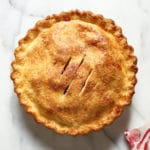

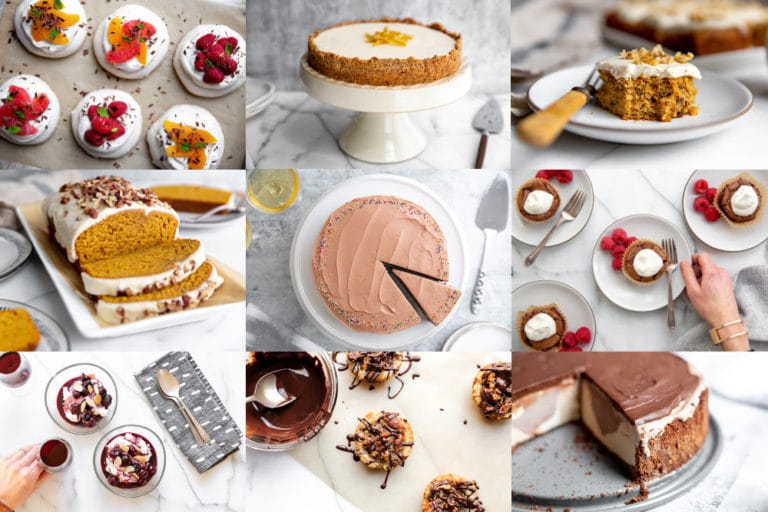
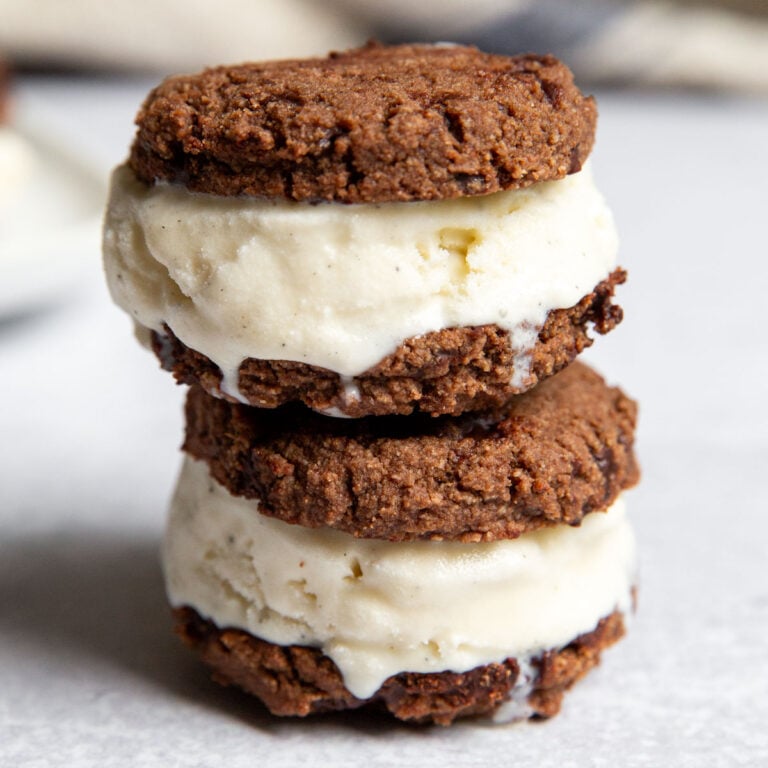


I love this recipe! My food processor is a bit small for the double crust amount. Has anyone made this using a kitchenaid mixer instead of the food processor? Does it mix properly; or does it need the blades of the processor to cut the butter in? TIA!
I'm so glad you love the recipe! I don't recommend using a KitchenAid mixer for this recipe, as you need the blade to cut the butter. However, you can make it by hand - see the recipe tips for instructions!
Hi Nicki,
I am wondering if it's possible to freeze this crust raw or baked, for a few days?
Tricia
Hi Tricia, yes!! You’ll see in the instructions that you can freeze the uncooked pie dough for months. You can also blind bake the crust, let it cool, then tightly wrap it and freeze that for up to a month. I hope you enjoy!
Thank you! I made a practice cherry pie with a lattice top and it received great reviews from my husband, daughter and her husband!
Blessings on you, Tricia
I'm thrilled to hear!
Look nowhere else. This recipe was Lovely and sooo convenient! I tried it when another dessert failed so I had to make a mango pie last minute. I made it with the GF recipe one day, then the next day did it with plain flour. So easy and must be fail-proof as I succeeded (I'm terrible with recipe's....I don't read through properly and don't pay attention!).
The only thing I had to change is I used 1/3 cp cold water and that was too much. That was easily remedied with added more GF flour without any adverse outcomes! When I did it with regular flour I used about a 1/4 water and that seemed to be sufficient.
Thank you Nikki, this is a keeper! about to make a quiche now! That'll be 3 x using your recipe in a week! And I don't usually bake:)
Hi Shannon, thank you for your sweet comment, and I’m thrilled you loved the pie crusts (and that mango pie sounds fabulous)! Happy baking!
can you tell me what apple cider vinegar does in this recipe? I do not like vinegar and wonder how important it it
Hi there! The vinegar helps create a flakier texture, but you can’t taste it at all. Happy baking!
Can you switch up butter with lard?
Hi Cathy! Yes, this recipe will work with lard in place of the butter. I hope you enjoy!
Looks wonderful! I am going to try it this Christmas. I am using it for sausage rolls. Is there any tips to keep it from falling apart? Do you think it will work for sausage rolls? Thanks!
Hi Tana, I do think it will work for sausage rolls, although it will be different from the traditional puff pastry used (this is a classic pie dough, so it won't puff up). Working the dough shouldn't be a problem, but since I haven't tested sausage rolls, I can't guarantee it will adhere to the sausages. Please let me know if you give it a try!
Followed the recipe exactly, it came out just like a non GF crust, we loved it so much we immediately made a second one. Thank you so much !
Hooray!! I’m so thrilled to hear. 😊
Hello! 🙂 Could cold palm shortening be substituted for the butter? My son is unable to have dairy right now. Thank you so much!
Hi Dana, yes you can use palm shortening as a dairy-free alternative, but for more flavor you might want to try vegan butter. Several readers have used Miyokos European Style vegan butter with great success!
hello! i wanted to ask: is it okay to use regular salt instead of sea salt? thank you!
Hi Lucie! Yes, you can swap in regular table salt for the sea salt. Happy baking!
Hello, I don't have a food processor, but I have a Vitamix blender. Will this work alright?
Hi Michelle! The Vitamix blender won't work for the dough (unless you have the processor attachment), but you can absolutely make it by hand!! I include instructions in the recipe notes, and you can watch how I do it here. Let me know if you have any questions!